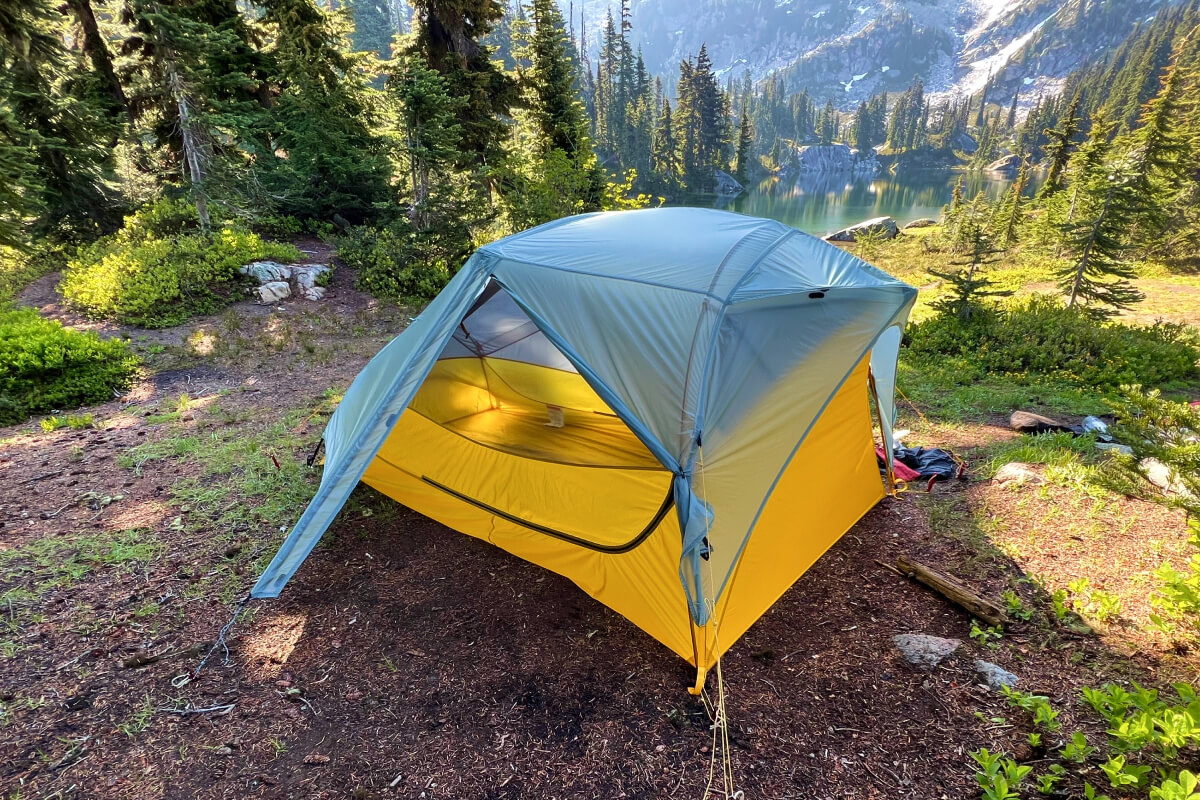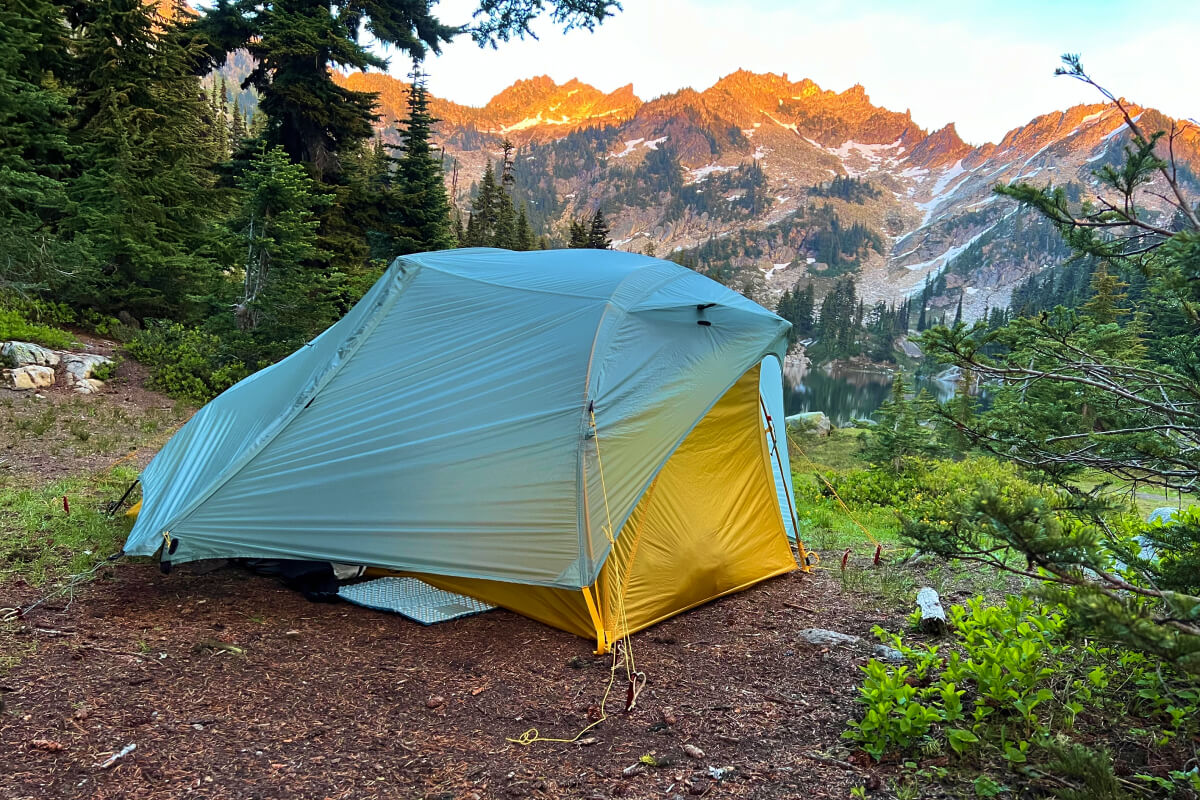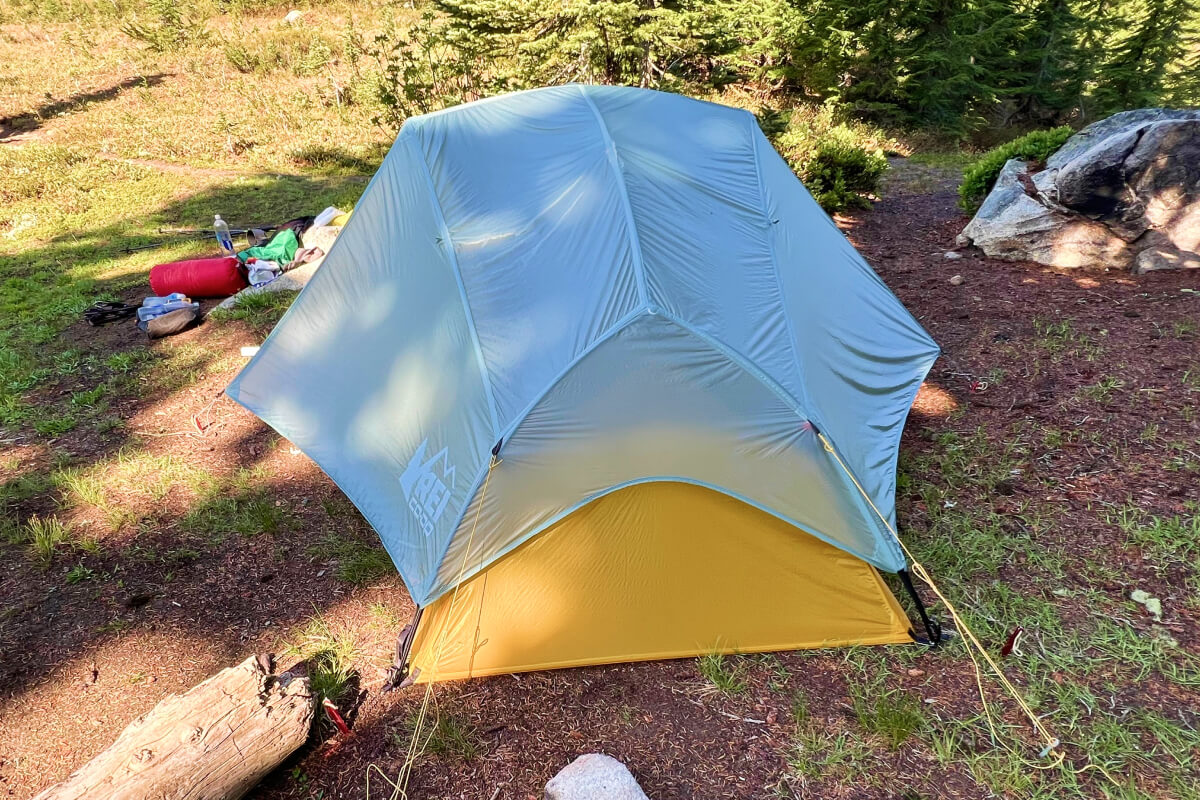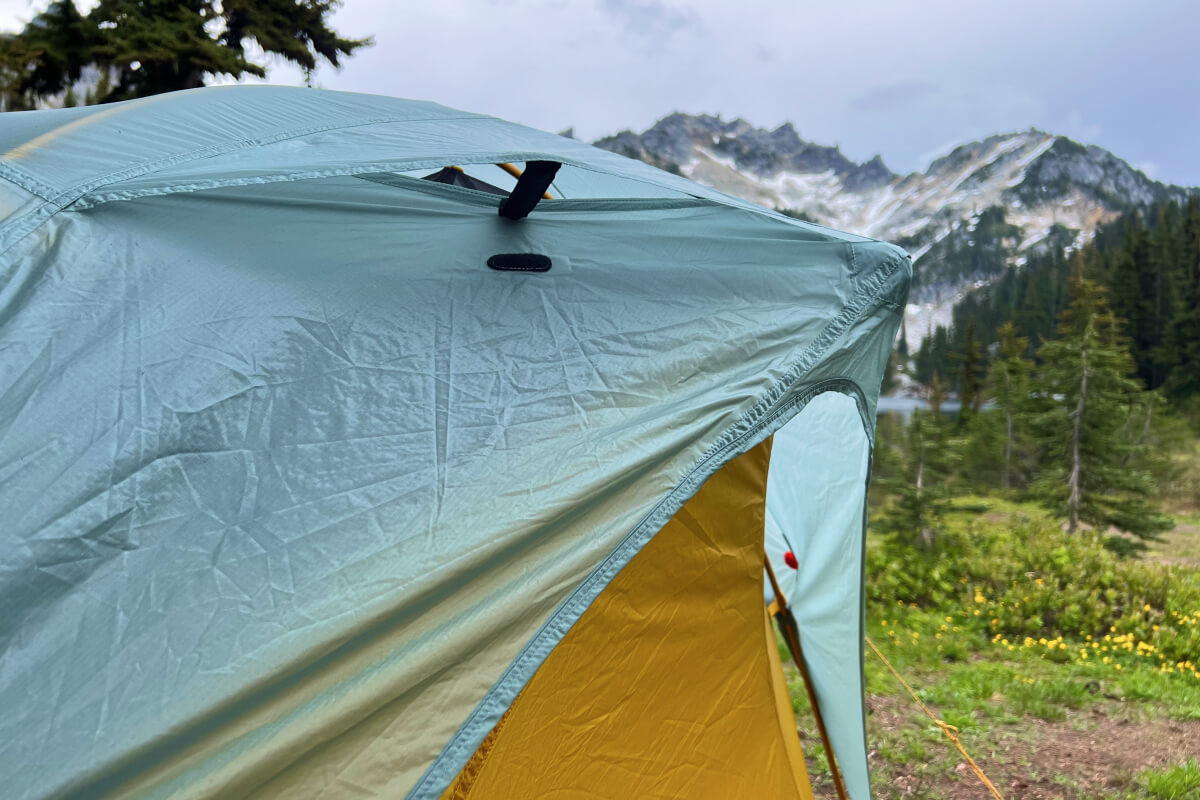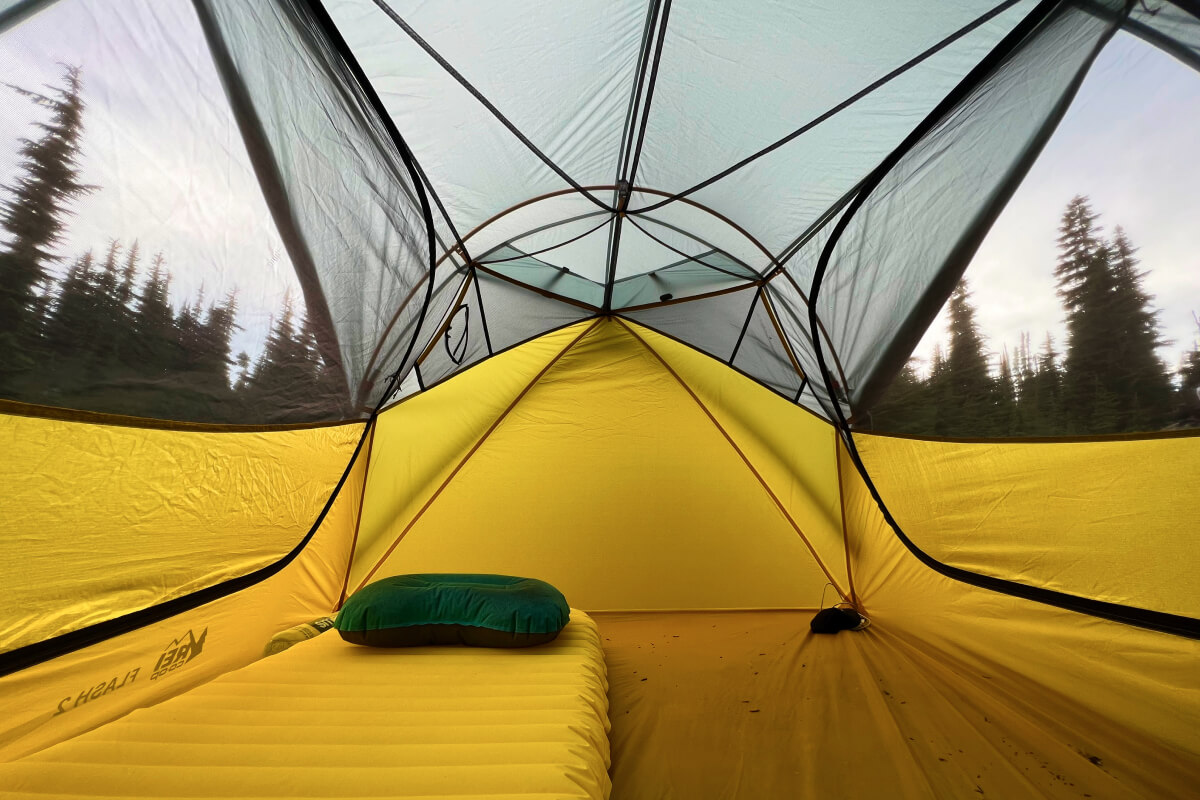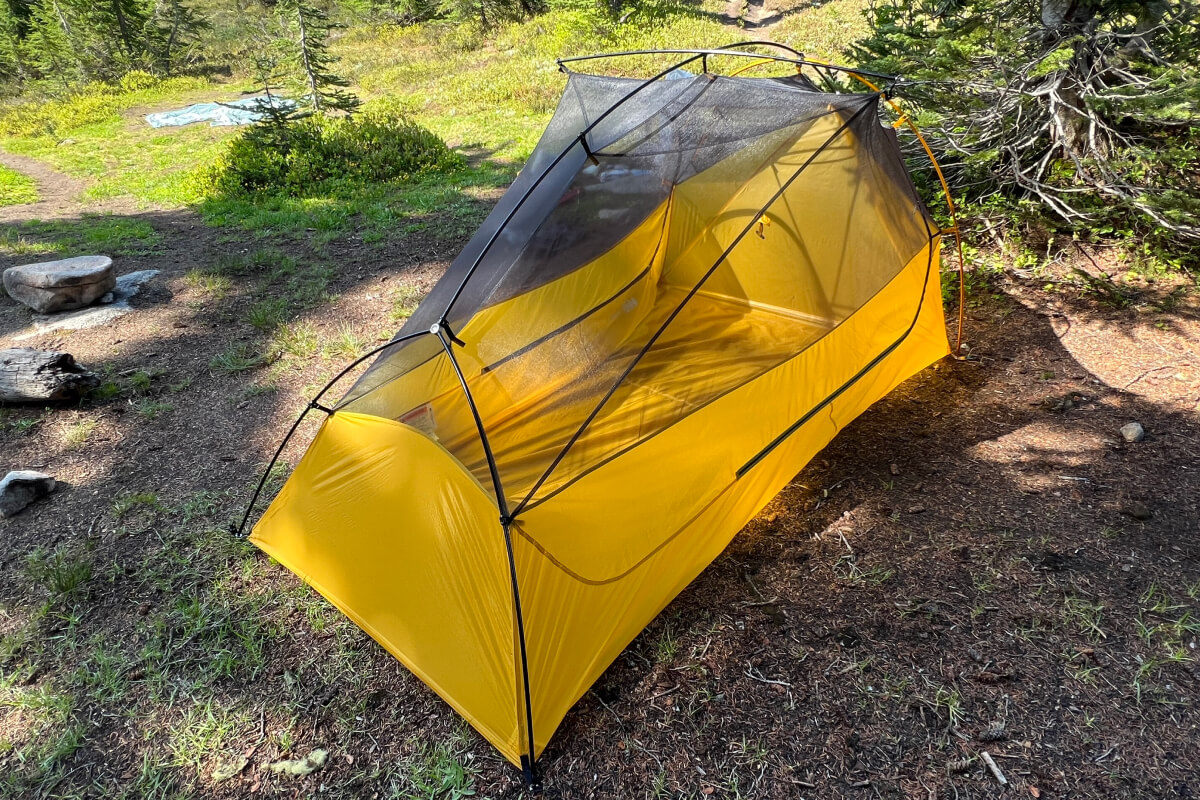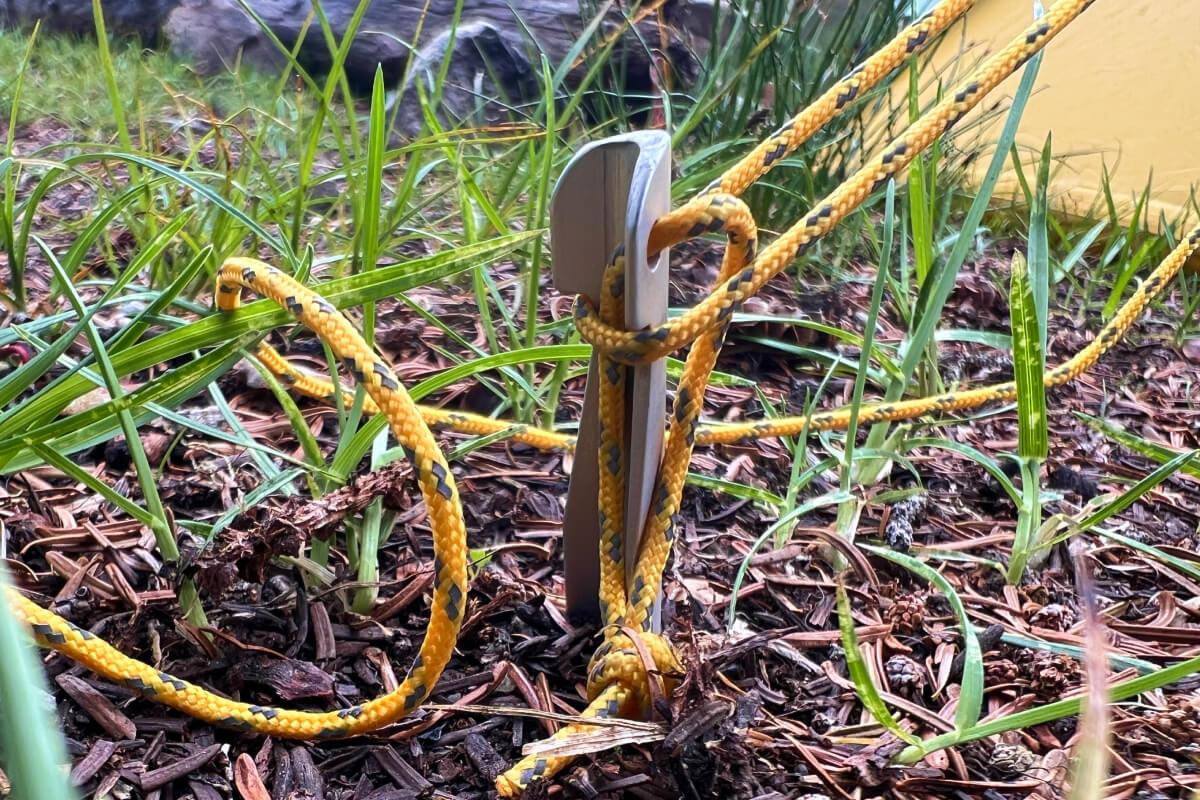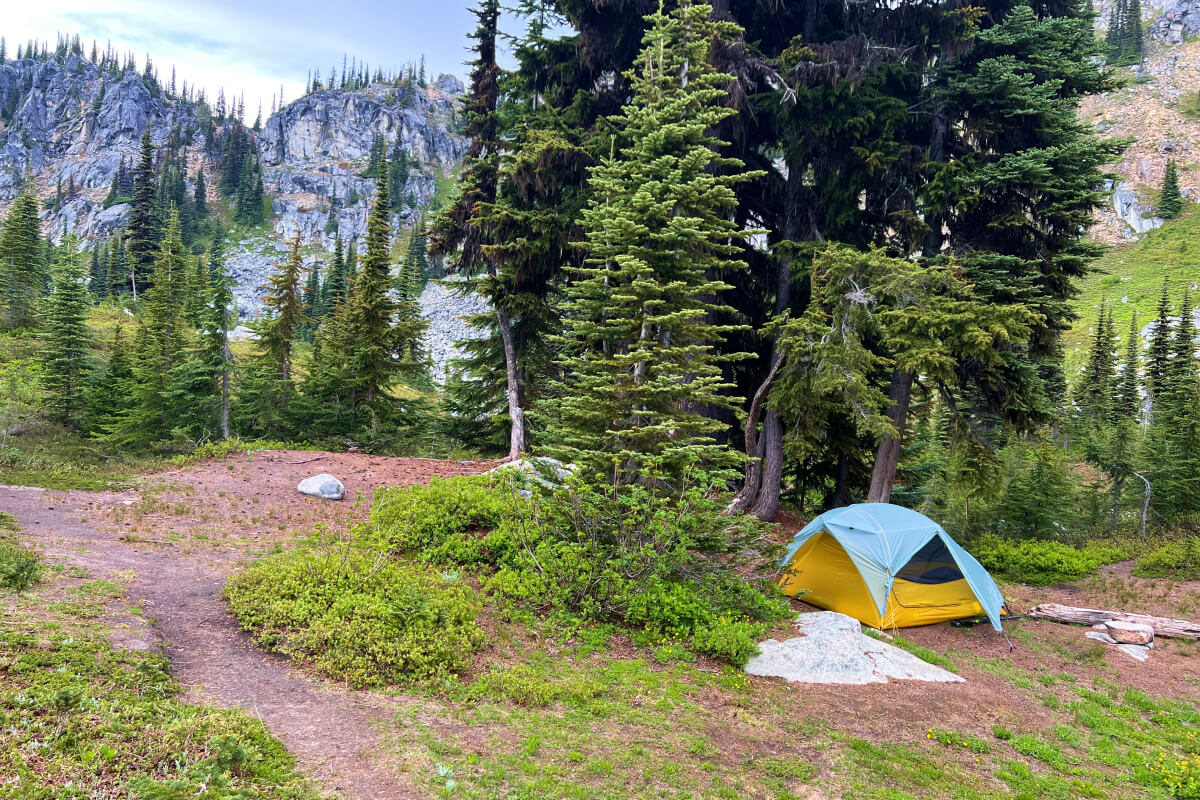REI Flash 2 Tent Review
The REI Flash 2 Tent (shop now) is a spacious, top-performing, lightweight, freestanding two-person backpacking tent at a fair price point. It is the sibling to the Flash Air 2 Tent, but different in that it is set up with dedicate tent poles instead of trekking poles and notable for the scooped rain fly and extra tall convex head end and foot end interior walls.
You make Adventure Alan & Co possible. When purchasing through links on our site, we may earn an affiliate commission at no additional cost to you. Here’s why you can trust us. Now let’s dive into the REI Flash 2 Tent Review.
- Price: $399
- Weight: 2 lbs, 13.2 oz
- Material: 20D Recycled ripstop silnylon
- Area: 28.7 ft² | Vestibule: 13.8 ft² | Area/Pound: 18.7 ft²
- Length: 88″ Width: 52″/42″ | Peak Height: 40″
- Pros: Lightweight. Freestanding. Good value. Sustainable design. Vents. Wide, tall, convex spacious head end.
- Cons: Somewhat narrow/low ceiling at foot end. Foot and head ends are mostly single walled, potential condensation issues.
Scooped Rain Fly and tall bathtub floor
Any REI Flash 2 Tent Review would be remiss to not immediately mention its most interesting feature, the convex head end in conjunction with the scooped rain fly and extra tall bathtub floor walls at head and foot end. This design choice takes a swing to save weight on rain fly materials and increase ventilation by encouraging more air through. It achieves this, but that but comes with some downsides too. Let’s dive in.
First and foremost, the scoops on the head and foot end of the rain fly improve ventilation as there is less double-covered area where bathtub sidewalls overlap with fly. It’s about 5-8″ of overlap. However, this is a double edged sword because on windy days, it allows more wind in, increasing susceptibility for the pitch to become loosened, warped, or damaged by a severe gust at the head end, where the overhang is capable of catching wind. While the poles do feel sturdy enough and very taught around the overhanging beak, we don’t recommend pitching the head end onto the windward side!
In this REI Flash 2 Tent review we have expressed concerns about wind. But the bathtub floor, while regular height on the sides, is extra high at the foot and head end, and surrounds the backpacker with waterproof materials at both ends. The head end and foot ends are more like a single-walled tent than a double walled design, which increases the likelihood of brushing against wet sil-poly material.
However, at 88″ the tent feels quite long, so by centering yourself, in practice, you are unlikely to contact either end much. And despite the scooped rainfly, we feel safe and protected from rain penetrating in all but the most extreme winds where gusts could torsional warp the structure to expose very minor gaps.
Other features
REI Flash 2 has an interesting pole structure. One main ridgeline pole runs the length of the ceiling before forking at the foot end. An arched cross section sits at the head end and provides a literally vertical wall. It is tunnel tent style, and will have excellent sturdiness against winds blowing at the sides. A ceiling spreader bar adds extra headroom where you would sit up, slightly offset from center towards the head end.
While the 40″ peak height is average, this tent does make good use of all 40″ for most of the tent body; it feels bigger inside than it actually is thanks to the spreader bar and convex head-end. We also love the head-end vents which are large and in charge. The convex head end is very user-friendly and creates a big perception of livability when inside.
At 13 sq ft, the vestibule is definitely on the smaller side, but there is still more than enough room to store a backpack and pair of shoes. The fly and floor are made with 100% recycled nylon. Mother earth thanks you.
Unlike many REI Tents, this one does not come with its own footprint and uses a rather thin floor material. So we recommend the Gossamer Gear Polycryo Ground Cloth to extend the lifespan and save as much weight as possible. It does come with 10 medium-quality, lightweight stakes and 4 extra unattached guylines. We recommend adding them to the foot end and head end.
REI Flash 2 Tent Review Verdict
The REI Flash 2 Tent makes some interesting design choices with the convex head to increase usable space, scooped fly for weight savings, and increased ventilation, plus extra tall bathtub head and foot ends to compensate. This may come with some susceptibility to wind and single-wall condensation issues, but they’re minor drawbacks on an otherwise very solid lightweight backpacking tent for a fair price. REI Flash 2 Tent is competitive with top of the line lightweight models from Big Agnes and NEMO. If you want the lightest freestanding Co-op brand backpacking tent, we recommend the Flash 2 as a slappin’ good value and great performer.

